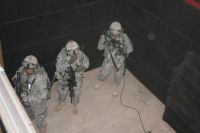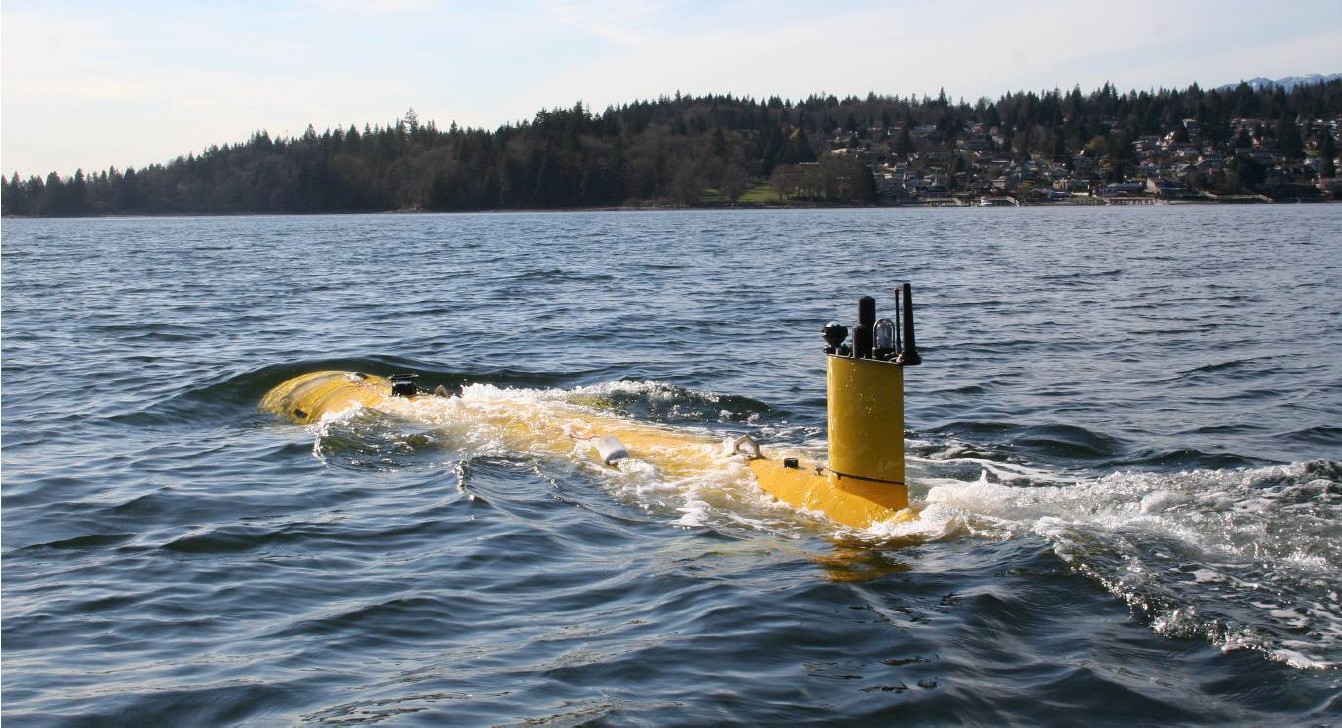WHITE SANDS MISSILE RANGE, N.M. — The Army is evaluating the mission command-on-the-move capabilities that allow Soldiers to communicate vertically and laterally through voice and data in a tactical operational environment.
The testing and evaluation of the network components, or technologies and system capabilities, is occurring through a series of semi-annual network integration evaluation exercises, at Fort Bliss, Texas, and White Sands Missile Range, N.M.
More than 3,800 Soldiers from the 2nd Brigade Combat Team, 1st Armored Division, are operating both systems under evaluation and systems under test and employing them in various realistic combat scenarios in operationally-relevant terrain designed to replicate the environment in Afghanistan.
“We have multiple tasks out here. We are evaluating 15 to 20 rapid-equipment-fielding items, of which some are network and some are not, and they are intended to go right into theater in Afghanistan and other places,” said Col. Daniel Pinnell, commander of 2nd BCT, 1st AD.
“On top of that, we have a longer term project to work for the Army, which is this data and voice network intended to be fielded from the individual Soldier up through the brigade command post — brigade tactical network, both voice and data,” Pinnell said.
The data and voice network will operate and meet different requirements in different types of fights, Pinnell added.
“I may use the same software or applications on each one of the devices in any type of conflict or environment, but what I’m asking of it may be completely different,” said Pinnell.
An example Pinnell gave was that of a typical major theater of war between two near-peer competitors.
“Certainly, in the major combat operations phases of that operation, I’m not paying very close attention to personalities,” he said. “I’m not collecting biometrics, by and large; I am not doing a lot of detailed pattern work on a population or an area. I am enemy focused, formation focused.”
“My questions will be different,” Pinnel explained. “I’ll still use the same device at the Soldier level to help me understand where I am, where my peers are, where I am being told the enemy’s been observed, and what he’s up to. But I’m doing it for different reasons, and I’m looking at different cues to help me make my decisions on what to do.”
“That’s the same from individual Soldier all the way through brigade commander,” he continued. “If the data and voice network works as intended — if we get the throughput in security on it and the applications that we’ve envisioned — it’s going to be able to meet those needs.”
Two fundamental priorities of the current NIE 12.1 are, first, for commanders to be able to command and control while they’re moving, and, second, to pull information out of the network and get it to a Soldier level, said Brig. Gen. Randal A. Dragon, commanding general for the Brigade Modernization Command, Army Capabilities Integration Center, under the Army’s Training and Doctrine Command.
Radios and hand-held devices are made available down to the level of the individual dismounted Soldier, added Dragon.
“You can look back in history and think about how we commanded on the move,” said Dragon. “At one time we used messengers or runners. We’ve used flags while we were moving formations. We’ve used radios to be able to talk to one another. In this digital age, we’re now able to pass information rapidly — large quantities of information to create a common picture so that commanders can command effectively and get their Soldiers to the right place at the right time.”
During NIE 12.1, Soldiers from 1st Battalion, 35th Armored Regiment, 2–1 AD, used hand-held communication devices to evaluate mission command-on-the-move capabilities in a simulated scenario in which platoons of Soldiers were searching for high-value targets in a suspected improvised explosive device factory.
Sgt. Ryan Moore, a team leader from C Company, 1–35 AR, said he used the Rifleman Radio system that is designed to give voice communication through everybody in the team– from the highest to the lowest level in the platoon.
“I think it’s important for Soldiers, because it gives each Soldier an overall situational awareness and it takes out a few steps,” said Moore. “As opposed to having to get up from where my position is — say if I’m dug in somewhere, and [I have to] run over and check on a Soldier or pass information on to a Soldier — if he’s got a radio I can call him and tell him what’s going on, or he’s monitoring the radio, so he’s hearing the same traffic that I am.”
Sgt. William Wilson, a team leader also from C Company, used the wearable computer systems, Wireless Network After Next and Nett Warrior, in a mock raid scenario.
“Basically what that was supposed to allow us to do was to better shoot, move and communicate,” said Wilson. “And to give a firsthand view for all the Soldiers on the ground; that way they can keep up to speed on the operation in every phase.”
Wilson said the systems are designed to accelerate the flow of information, giving Soldiers the added advantage to respond.
“The faster that we know everything, the better we can be in reacting to all the changes that can happen on the battlefield,” Wilson said. “The Nett Warrior allows us to help populate from a bird’s‑eye view [using] satellite imagery. It helps us populate basically the maps giving current check points, and things such as that.”
Moore said he believes the Army should pursue technology that facilitates fire and maneuver and survival in close combat. The systems should allow Soldiers to access key information anywhere, at all times and all the way down to the small unit and Soldier level, he said.
“It goes back to the basics of what we all do — shoot, move and communicate,” said Moore. “All this equipment lets us do that faster. There’s no shooting flares in the air to signal things anymore. I can call somebody, and everybody knows; we’re all on the same page at the same time.”
Source:
US Army

 von
von 
